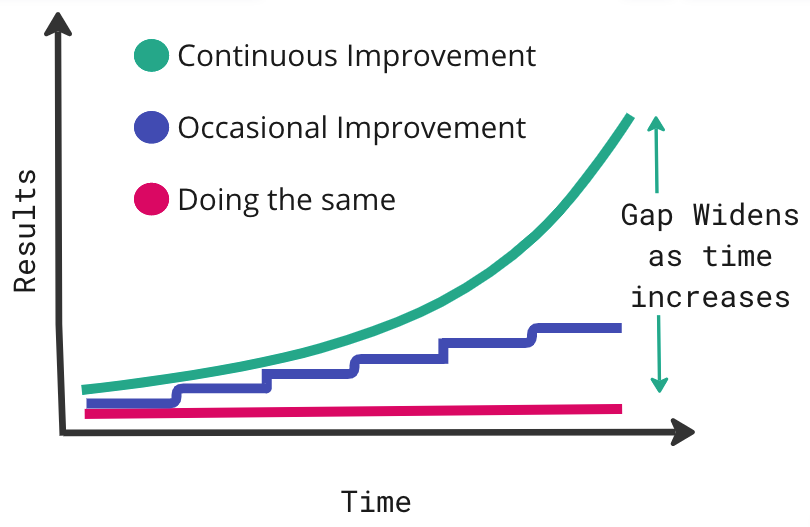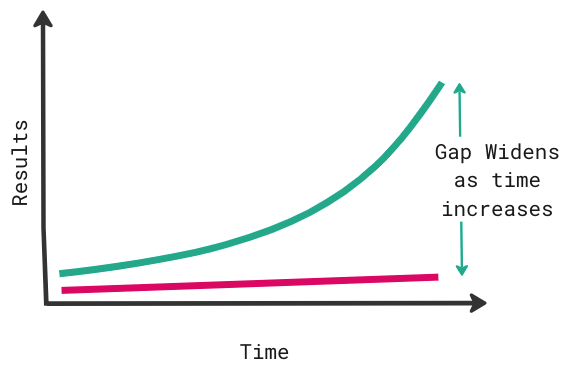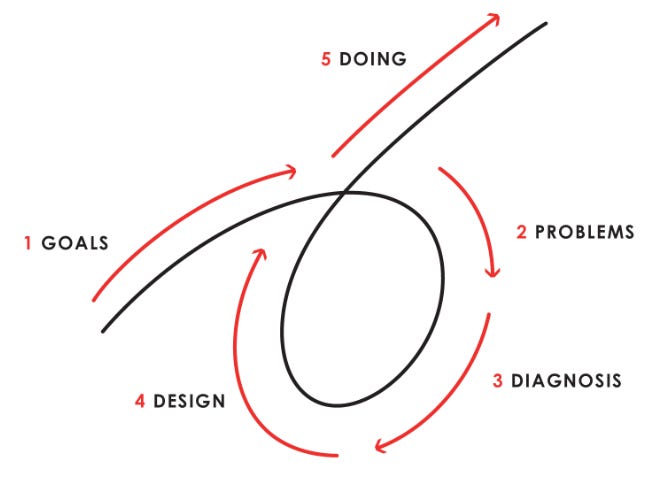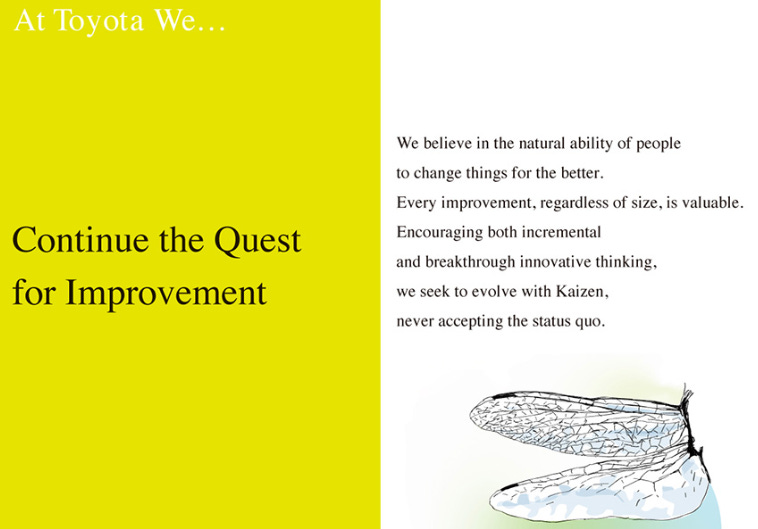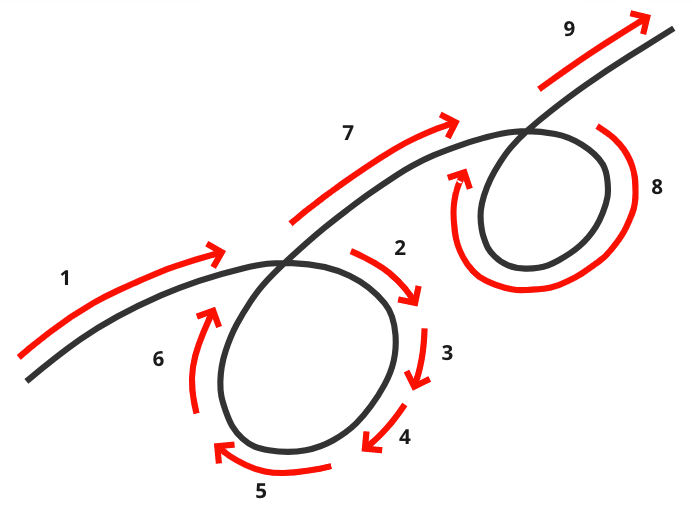From Daily Wins to Infinite Games: Creating Enduring Success through Continuous Improvement and Social Capital - Part 1
Discover how daily wins and continuous improvement lead to enduring success through the power of social capital and infinite games mindset.
Thanks for coming here, I think you will enjoy this article. Before you start reading, if you can click the ❤️ button on this post so that other people can discover it on Substack, it really makes a big difference. And please share it. Share it on your Linkedin. Share it on your Facebook. Share it on your X. Thank you.
I was observing someone at work the other day.
Ok, that sounds creepy. Let me start again.
Once upon a time years ago in a land far, far away, I worked with someone and they were in charge of manufacturing. He was smart - very smart. He also knew it and wanted others to know. He knew how to do things, he understood the theory, he understood the concepts. He wanted to show others that he knew how to solve the problems himself. He never asked for help, never asked for his team's input. He worked in a silo, doing things in his head. When his team asked for his help, he would do the old sloped shoulder and brush them off to each other or to others in the company. When they worked longer hours or overtime, he would leave right at the 8 hour mark, or find reasons why he could not support them. The team was slowly breaking down years of hard work we had put into building them, and improvement had all but stopped.
Back to the other day.
I was watching and listening to one of our teammates at work - let's call him Jenkins. He was running a workshop for his entire team - one of the many he does on a regular basis. He teaches ideas and tools, involves his team, encouraging them to ask questions and be involved. When they're stuck during the working day he's right in the mud with them. Not necessarily giving them the answers if the knows them - he'll spend time challenging them and pushing them to figure things out - but he is there, struggling, learning, and encouraging them. He delights in his team's excitement and improvement, and encourages them to get better every day. He has them embracing the concept of continuous improvement - not just of the workplace around them, but of each other.
Jenkins has it figured out. He's making things better around him and creating a legacy, a next generation of top performing problem solvers. This anecdote highlights the stark difference between a mindset focused on individual knowledge and lack of development and one centered on collective growth and improvement. The latter not only enhances his personal skills but also builds stronger, more cohesive teams.
Today we’ll explore how the principles of continuous improvement and the development of social capital can transform daily wins into lasting success, fostering an environment where everyone thrives together and ultimately leave things better off.
Continuous improvement
For the readers that aren't aware, we'll briefly go over continuous improvement. It's pretty self-explanatory and the name gives it away - it's about continuously improving.
Yup.
Tongue in cheek response aside, Continuous improvement is a core lean principle aimed at enhancing processes, products, and services incrementally over time. Known as "Kaizen" in "Lean" terminology, it emphasizes small, consistent changes that collectively lead to significant improvements over time. The goal is to eliminate waste, improve efficiency, and create more value for customers with fewer resources.
By implementing continuous improvement thinking we make things better over the long term for ourselves, the businesses we are involved in, and ultimately, the customers we have.
The Impact of Incremental Improvements
It's pretty identical in concept from compounding returns or the Matthew Effect previously touched on - Making small improvements generally open up new possibilities and opportunities, making further improvements easier and more impactful.
As we get better, as we improve the businesses we are involved in, we tend to see more gains over time. Not necessarily only financial gains, but we also learn more, have more opportunities to grow as we build on our knowledge, and improve things to reach better and better operational statuses over time.
A great way to visualize it is the following - two kids are standing at a fence. The fence represents the barrier between them and opportunity. Every time one learns something, they stand on that book of knowledge. Eventually one is able to use that knowledge to see and start accessing opportunity.
Building Long-term Thinking through Daily Wins
Small daily wins, with a focus on long term improvement, can fundamentally shift a team's mindset from short-term fixes to strategic, future-oriented thinking. By emphasizing continuous progress, teams are encouraged to think beyond the immediate results and consider how their actions contribute to long-term goals and success. People start thinking about how to make things better for themselves, their teams, and the business in the future.
When team members are encouraged to look ahead, they start to prioritize sustainable solutions over quick fixes. They begin to understand that their daily efforts, no matter how small, are integral to the broader vision of the organization. This approach not only enhances individual performance but also aligns team efforts with the long-term objectives of the company.
Now for the icing on the cake - as people work together implementing improvements to achieve these common goals, they build stronger bonds and improve their ability to communicate and support each other. This collaborative and trusting environment is key to fostering a culture of continuous improvement, where everyone is invested in each other's success. It becomes a self-reinforcing cycle.
And in my naïve mind it all ties back to legacy, to leaving things better for the next people, to leaving things in the business better than you found them, to giving your future self an advantage over your self today. It's practicing building that future-oriented mindset, encouraging yourself and others to think beyond the noise and immediate tasks and to build in a culture of long-term planning and strategic thinking.
But hey - we'll come back to the team and people benefits on part 2 of this article.
Creating an Internal Improvements Backlog
It needn't be difficult to makes things better over time - It just takes a few minutes a day. Even when you're busy and can't find a minute to breath in a work day, taking 5 minutes to write down how you could make something better next time goes a long way (hint - timebox it or make it part of your daily routine and it will be done). For example - we have an internal improvements backlog - any of the team members can jot down an idea they come up with, anything at all, as long as they can explain what improvement it will make - be it saving time, improving performance, providing insight… whatever. Once a quarter we go through the list and select the ones that we think would have the biggest impact, with a focus of tying them to our annual goals. Not hard, no magic formula, just putting down ideas to work on. Then we work on them.
For my personal life I just use a notebook and throw ideas down; once a quarter I do the same as at work - I read through the ideas and see what I want to get done that season. But it doesn't need to be a big formal thing; sometimes it's just a few minutes and "yeah I'll learn how to crochet" or "I'll change the bearings on the truck" or "I'll build myself a budget". Done.
Continuous Improvement and Problem Solving: A path to enduring success
Ray Dalio, one of my favourite investors and the founder of Bridgewater Associates, developed a 5-step process known as the Evolutionary Loop, which emphasizes the importance of learning and evolving through continuous improvement. If you look at it, it's really a method to help you continue getting better over time.
If you can do those five things well, you will almost certainly be successful. Here they are in a nutshell:
Have clear goals.
Identify and don’t tolerate the problems that stand in the way of your achieving those goals.
Accurately diagnose the problems to get at their root causes.
Design plans that will get you around them.
Do what’s necessary to push these designs through to results.
The best part is… Ray’s evolutionary loop has a great visualization.
What I love about this is that it shows the journey of growth. Your goals get you exited, but then problems occur that start to set you back. As you diagnose the problems and design solutions, you start evolving, progressing again. Then you just get back to doing things and keep moving up. So good.
I remember when I first saw this, nerded out, and tried incorporating it at work and in my personal life. It was difficult. Yes, I did find it powerful…. BUT I kept falling short - the problem with so many tools, and their benefits too, is that they are vague and leave things open to interpretation. That openness works for many people, myself included sometimes, but in this case I needed more. Looking at the "Problems" section - identify and don't tolerate the problems that stand in the way of achieving those goals.
Well…. How? How do you describe a problem?
So many times we as people are great at describing symptoms, but we're not always great at determining the root causes, or the true problem statements. Example: Years ago I hurt my back; injury in the lower vertebrae. But the pain was in my leg and foot. So for the first little while I thought there was something wrong with my leg as there was no localized pain at the source of the injury. Only after some scans and doctor visits did we figure out that there was a back injury. I had chased the symptoms. But even then, the problem was not the injury, it was the repetitive motions and posture that had led to the injury. The injury had been just a symptom of pushing my body in ways that eventually led to an injury.
Poor posture -> Back injury -> Leg pain
BUT going one level deeper, the poor posture had been due to a pre-existing injury I had from when I was a kid and had fallen out of a tree.
Fall out of tree and injure back (Root cause) -> injury and resulting stiffness in upper back (symptom) -> poor posture (symptom) -> back injury (symptom) -> Leg pain (symptom).
Anyhow. The point is, I had, and I posit that many people have, a hard time determining the true problem definition and the root cause of a problem. Thankfully we can stand on the shoulders of giants here.
Toyota’s 8-Step Problem-Solving Method
There are more problem solving methodologies than you can shake a stick at. Some of the best are the ones that really take a deep dive into defining what the problem is. My favorite (make fun of me if you will, I certainly do) is Toyota’s 8-Step Problem-Solving Method. Yup, that Toyota.
The 8 Step Problem Solving Method, often associated with the Toyota Production System, can be traced back to the 1960s. This methodology was developed in response to the need for a systematic approach to problem-solving that was simple to understand, yet effective in dealing with complex issues.
So much has been written about the "Toyota Way" that I would not do it justice. Suffice it to say it was a revolutionary way of thinking, and one of the outcomes was a problem definition process that helped Toyota become a world leader in quality and manufacturing. Most other car manufacturing company tried to emulate, and which has formed an important part of manufacturing systems in every industry the world over.
Continuous improvement and their quest to better themselves is still in full effect:
Alright, so, their 8-step problem solving method (thanks again Jan Kratka):
Clarify the Problem: Clearly define the problem and its impact. Being specific about the problem paves the way for targeted solutions.
Break Down the Problem: Break down complex problems into smaller parts. This makes it easier to handle and analyze each component.
Set a Target: Define what successful resolution looks like. A clear target guides the problem-solving process and aids in evaluating success.
Analyze Root Cause: Identify the cause of the problem. This allows for solutions that address the source of the problem rather than just the symptoms.
Develop Countermeasures: With the root cause in mind, create strategies to solve the problem. Encourage team collaboration and diverse perspectives for creative and effective solutions.
Implement Solutions: Put the plan into action. Communication and involvement of relevant stakeholders are crucial during this stage.
Evaluate Results and Processes: Review the outcome. Did the solution achieve the set target? Learn from the result and refine processes as needed.
Standardize Successful Processes: If the solution worked, make it a standard practice. This prevents the problem from recurring and can serve as a template for solving similar issues in the future.
The important thing I want to highlight here is the amount of effort spent on identifying the correct problem. Consider my injury; really understanding the true problem (stiff upper back as I can’t go back in time and prevent falling out of the tree) has allowed me to slowly and steadily work on improving my body movement and decrease the risk of re-manifestation of the low back injury.
Misidentifying a problem often leads to just treating the symptoms rather than tackling the root cause. This means we end up with temporary fixes that don't stop the issue from coming back. When we identify the correct problem, we can focus our efforts on finding and addressing the underlying causes, paving the way for long-term, sustainable solutions. This also translates to all areas of life - financial, business, relationships, as well as personal health.
In a financial context, central banks might use Quantitative Easing (QE) to boost the economy when consumer spending is low. However, if the real issue is low consumer confidence due to high unemployment and stagnant wages, QE only offers a temporary fix (also resulting in increased inflation… sound familiar?). By correctly identifying the root problem—unemployment and wage issues—the central bank can implement targeted measures like job creation and wage growth policies, leading to sustainable economic recovery and long-term stability.
In a business context, a company might notice declining sales and assume the problem is poor marketing. However, the root cause might be a product quality issue. Investing in marketing without addressing the quality problem will not solve the issue. Correctly identifying the product quality as the root cause allows the company to focus on improving the product, which in turn, will likely boost sales.
In relationships, you might think constant arguments are the problem and try to fix them by avoiding sensitive topics - after all, less arguments = peace, right? Wrong, if the real issue is a lack of trust or communication, avoiding arguments only offers a temporary and surface level fix. By accurately identifying the root problem— lack of trust and poor communication—you can focus on building open, honest dialogue and trust, leading to a healthier, more sustainable relationship.
Ok. So. Neat. A great problem solving method. Works great for technical problems. What about when you translate the Toyota 8-step process back to life? What is missing? Well, the starting point.
The goals.
That's the benefit of Ray's 5 Step evolutionary process on continuously improving your life (and work, and…everything really). Why are you solving a problem? Why are you making things better? This is where the overarching vision (or the foundation of your life's endeavors, or goal of your project, work, etc…) is key. Without that piece, yes you may be solving a problem, but it may not be tied to what you really need to do and accomplish.
And the visual. Toyota is, from my perspective, missing that visual piece that makes things simpler for visual learners like me. So I did what needed to be done, what was demanded. I blatantly took them and forced them together.
The 9-Step Improvement Loop
In a show of true originality, I named it the 9-step improvement loop (I hope no one sues me).
Set a clear goal - decide what you are going after.
Clarify the problem - clearly state the problem you encounter.
Breakdown the problem - detail using what, when, how and who.
Set a target - what will be accomplished and by when.
Analyze the root cause - using 5 Whys, fishbone or other methods.
Develop countermeasures - create actions to counter the root cause(s).
See countermeasures through - ensure countermeasures are applied.
Evaluate the results - review the results and modify if necessary.
Standardize successful processes - implement the changes permanently.
And the double loop to me really helps visualize not just the slow down during problem identification and solving phase of improvement, but also the evaluation of the outcomes or results - the lessons learned, or thinking if you were successful or not.
How does this look in practice? Pretty simple.
Here's what I do.
I run my own annual and quarterly strategic meeting - it's pretty much exactly the same format as doing this for a business or company. Once a year, around the Festivus winter holidays, I take up to a week and review what was done over the past year, and think about what I would like to accomplish the coming year. These are typically tied to long-term visions, purposes, and aspirations. Some of these things are personal - do some courses, upgrade something in a vehicle, spend more time with a person - and some are joint with my partner and friends. Then I back-engineer what needs to happen, quarter by quarter, and then breakdown the coming quarter into discrete steps of work to be done per week. Then once a quarter, I review what was done in the last three months and plan what to do in the coming three months. And I review things weekly. And some things I keep track of daily. So yeah, I structure my life in the same way as I structure my work. I am trying to future think, trying to look ahead to ensure that my future self is left a little bit better than my current self.
Is it onerous? Sometimes. Is it too regimented? Sometimes. But consider this - by continuously improving my life through discipline, continuously keeping an eye on where I want to go, where I am, and where I have been, I am creating more freedom over time to be the person I want to be and have the life I want to have. As Jocko Willink put it:
While Discipline and Freedom seem like they sit on opposite sides of the spectrum, they are actually very connected. Freedom is what everyone wants — to be able to act and live with freedom. But the only way to get to a place of freedom is through discipline. If you want financial freedom, you have to have financial discipline. If you want more free time, you have to follow a more disciplined time management system. You also have to have the discipline to say “No” to things that eat up your time with no payback—things like random YouTube videos, click-bait on the internet, and even events that you agree to attend when you know you won't want to be there. Discipline equals freedom applies to every aspect of life: if you want more freedom, get more discipline.
By embracing continuous improvement, not only do we enhance our individual and team capabilities, but we also contribute to a larger legacy of growth. By fostering a mindset of continuous improvement, we are not just solving immediate problems but are also setting the stage for ongoing development and future success. It's about creating systems and cultures that hopefully continue to thrive even after we are gone (or our current selves have given way to our future selves). This legacy of continuous improvement and infinite thinking ensures that our impact endures, creating a positive ripple effect that extends far beyond our immediate reach.
That grew into something bigger than I anticipated. So, I broke the rest of the article into a second part, where I'll focus on the positive impacts that teamwork, knowledge sharing, and continuous improvement has on social capital. Sneak peek - it can build foundations of trust, resulting in an environment where people thrive and feel more connected to each other.
Thanks so very much for reading. If you loved this, please share it with your friends, family, enemies and strangers. Click the ❤️ button on this post so that other people can discover it on Substack. Read the other things I wrote. Oh and I should be asking you to subscribe if you haven’t. Please do these things, they all mean a lot.




